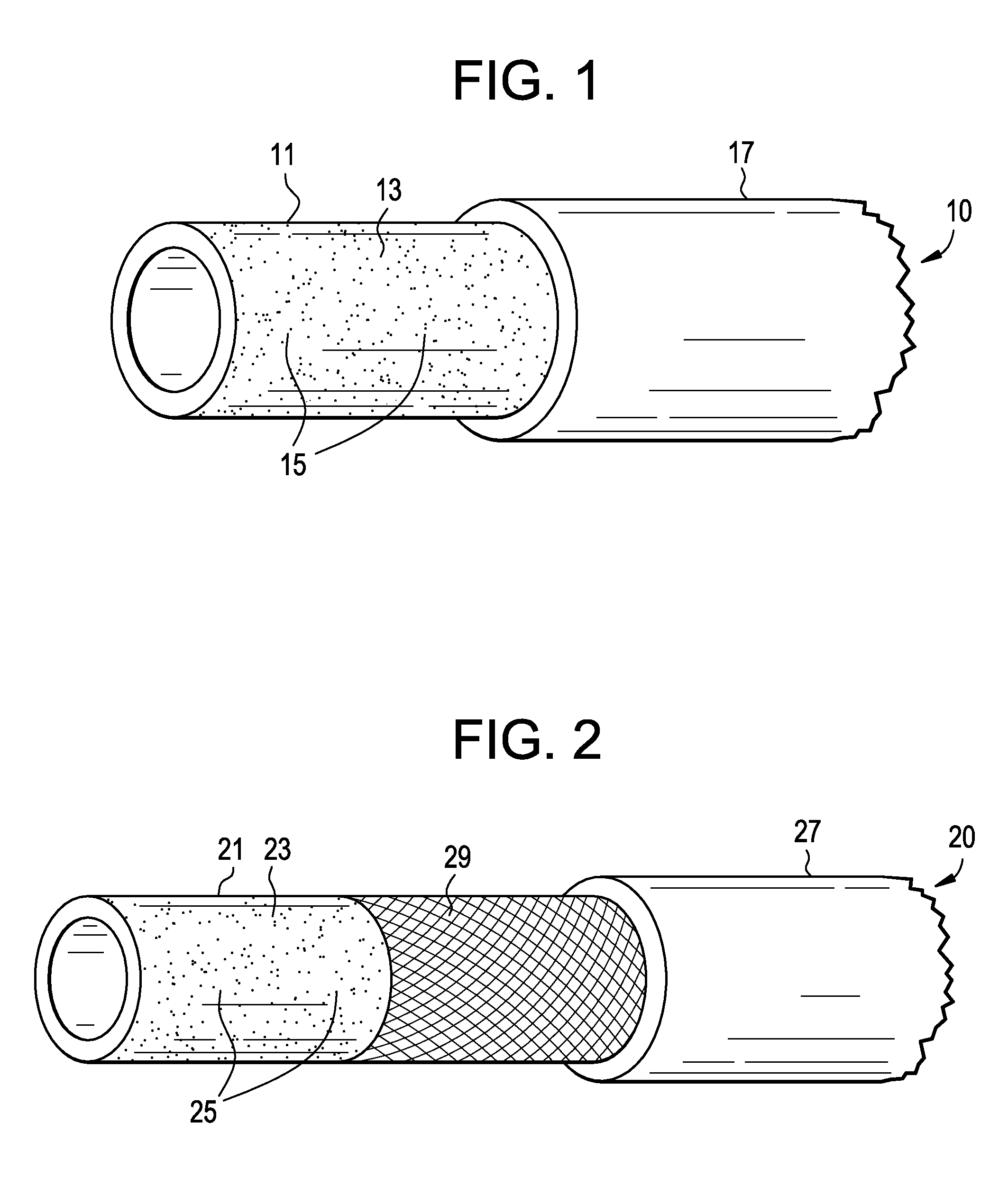High temperature-resistant hose
a high temperature resistant, hose technology, applied in the direction of flexible pipes, tubular articles, thin material handling, etc., can solve the problems of reducing the cold resistance of the hose, affecting the quality of the resulting hose, and putting an ever increasing burden on automobile manufacturers to provide improved materials
- Summary
- Abstract
- Description
- Claims
- Application Information
AI Technical Summary
Benefits of technology
Problems solved by technology
Method used
Image
Examples
first embodiment
[0019]With respect to the Figures provided to exemplify the present invention, FIG. 1 illustrates the invention wherein the automotive vehicle vacuum brake hose 10 includes an elastomeric tubular member 11 having an elastomer matrix 13 including a plurality of additives 15 dispersed therein. The automotive vehicle vacuum brake hose 11 further includes a protective cover 17 around the elastomeric tubular structure 11.
second embodiment
[0020]FIG. 2 illustrates the invention wherein the automotive vehicle vacuum brake hose 20 includes an elastomeric tubular member 21 having an elastomer matrix 23 including a plurality of additives 25 dispersed therein. In the embodiment of FIG. 2, the automotive vehicle vacuum brake hose 20 includes a protective cover 27 and a reinforcement member 29 disposed between the elastomeric tubular member 21 and the protective cover 27.
[0021]In accordance with the present invention, there is provided a high temperature-resistant vacuum brake hose comprising an elastomeric tubular member having, as a matrix, an elastomeric material selected from the group consisting of acrylic elastomers and ethylene-vinyl acetate (EVA) copolymers. In addition to the elastomeric tubular member, the vacuum brake hose may include a reinforcing member around the elastomeric tubular member to provide reinforcement and strength to the hose, and a protective cover around the reinforcing member to protect the hose...
PUM
 Login to View More
Login to View More Abstract
Description
Claims
Application Information
 Login to View More
Login to View More - R&D
- Intellectual Property
- Life Sciences
- Materials
- Tech Scout
- Unparalleled Data Quality
- Higher Quality Content
- 60% Fewer Hallucinations
Browse by: Latest US Patents, China's latest patents, Technical Efficacy Thesaurus, Application Domain, Technology Topic, Popular Technical Reports.
© 2025 PatSnap. All rights reserved.Legal|Privacy policy|Modern Slavery Act Transparency Statement|Sitemap|About US| Contact US: help@patsnap.com


